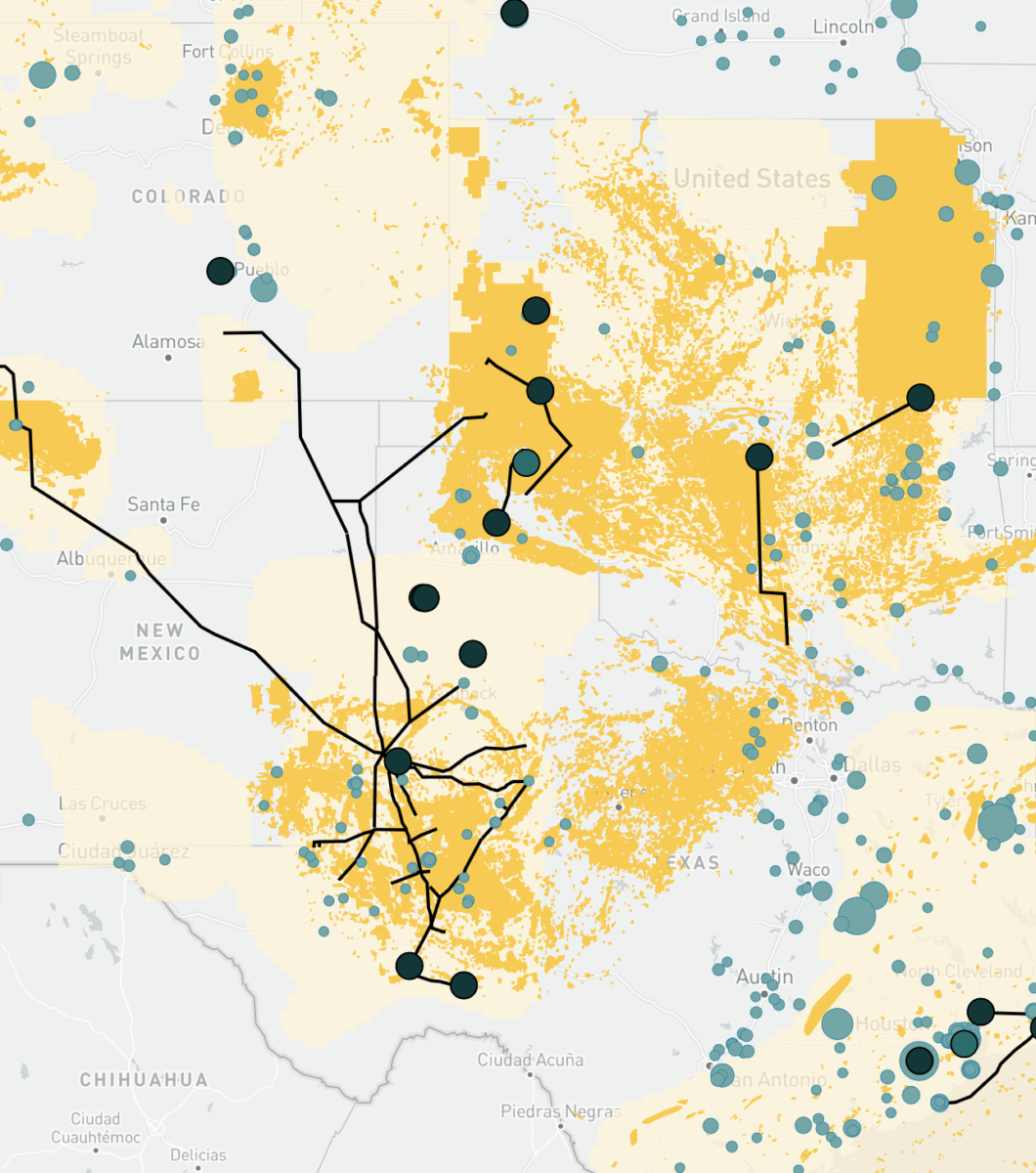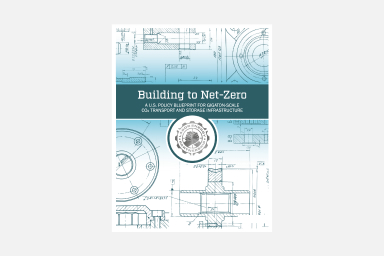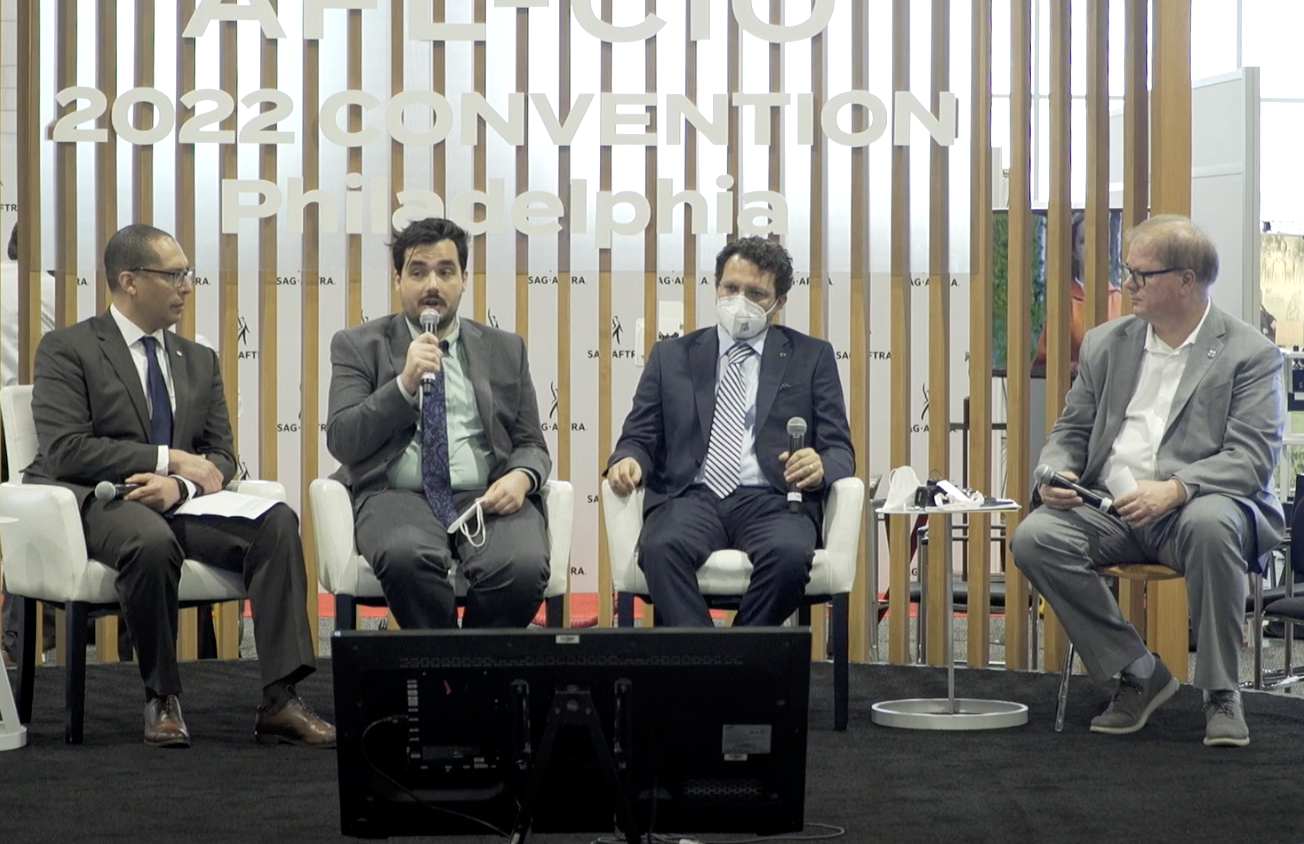Current CCS Projects, CO2 Pipelines, and 45Q-eligible facilities in the United States
There are 19 operational carbon capture, utilization, and storage (CCUS) projects, more than 4,500 miles of CO2 pipelines, and approximately 1,500 facilities eligible for the Section 45Q tax credit (i.e., industrial facilities emitting at least 100,000 metric tons of CO2 emissions each year and power generators emitting at least 500,000 metric tons). Another 22 CCUS projects are in development, three of which are hubs intended for the storage of multiple surrounding emitting facilities. The facilities shown in dark blue are further examined in callout boxes below as a part of a regional CO2 hubs analysis.
Potential Sites for Geologic CO2 Storage
Saline aquifers and oil and gas reservoirs can be used to permanently store CO2. The Bureau of Land Management (BLM) territory overlaps with saline and oil and gas reservoirs, which BLM can lease for CO2 storage. The Outer Continental Shelf (OCS) comprises 1.7 billion acres of ocean area, much of which offers suitable geologic storage. The Bureau of Ocean Energy Management (BOEM) can lease mineral resources to private and public entities, as well as the right to issue leases, easements, or rights-of-way for the purpose of sub-seabed CO2 storage.
Three Potential CCS Hubs in the United States
Hubs are critical tools to deploy CCS and decarbonize regions of the country. This map shows CO2-emitting facilities and notional CO2 pipeline routes and sinks in three areas of the United States: Wyoming, the Texas and Louisiana Gulf Coast, and the Ohio River Valley, all modeled using SimCCS.
- Wyoming: Includes Wyoming Pipeline Corridor Initiative (WPCI) routes. Also shown are existing CO2 pipelines in the state, many miles of which run along the WPCI.
- Texas and Louisiana Gulf Coast: Includes existing CO2 pipelines in the region. Storage is also available on land, but ample storage potential offshore offers compelling opportunities worth exploration.
- Ohio River Valley: The black lines show notional pipelines that run in seven separate locations on the map.



